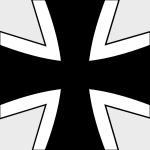Minichamps MIN350041001 German M48A2GA2 'Patton' Medium Tank - Panzerbataillon 363, Panzergrenadierbrigade 30, 10. Panzer Division, Kuehlsheim, West Germany, 1984 (1:35 Scale)
"History is the sum total of things that could have been avoided."
- Konrad Adenauer, First Chancellor of West Germany, 1949-1963
 When the Korean War began, the US military had no medium tanks in production. The M47 appeared as an interim measure but work immediately began on the M48. The first 'Pattons' were completed in July 1952. Unfortunately, the speed of development resulted in numerous teething troubles for the early Pattons, including poor reliability and a short operating range. The A3 was a highly modified version designed to rectify these failings, and the M48 has been used as the basis for flame-thrower tanks, recovery vehicles, and an AVLB.
When the Korean War began, the US military had no medium tanks in production. The M47 appeared as an interim measure but work immediately began on the M48. The first 'Pattons' were completed in July 1952. Unfortunately, the speed of development resulted in numerous teething troubles for the early Pattons, including poor reliability and a short operating range. The A3 was a highly modified version designed to rectify these failings, and the M48 has been used as the basis for flame-thrower tanks, recovery vehicles, and an AVLB.
Most M48's in Vietnam had the commander's M2 .50 cal. machine gun mounted on top of the cupola on a simple pintle mount. This location gave him a better field of fire, was faster to reload, and was less prone to jamming than when the M2 was placed on its side inside the armored cupola. Unfortunately, this also meant the tank commander was terribly exposed to enemy fire when firing the M2.
Rocket Propelled Grenades (RPGs) were a constant threat in Vietnam, and M48 tanks countered this threat by mounting pierced steel plank (PSP), chain link fence, and spare track blocks on the fenders to prematurely detonate incoming RPG's. Cases of C-rations strapped to the infantry rail on the turret -- like the PSP and track blocks -- also acted as a stand-off shield. Since anti-tank rounds require a certain stand-off distance to function effectively, the C-rations dissipated the force of the explosion away from the armor. It was also the only place to store rations, because space in the vehicle was at a premium and occupied mainly by ammunition.
This particular vehicle was used by the German Bundeswehr's Panzerbataillon 363, Panzergrenadierbrigade 30, 10.Panzer Division, then based at Kuehlsheim, West Germany in 1984. Notice the shortened bustle rack located behind the turret and lack of a cupola-installed machine gun atop the turret. Comes with a collapsible travel lock for the gun barrel.
Sold Out!
Dimensions:
Length: 9-3/4-inches
Width: 4-1/4-inches
Height: 4-inches
Release Date: August 2003
Historical Account: "Two Deutschlands" - Germany had been without its own armed forces since the Wehrmacht was dissolved in the years following World War II. Some smaller forces continued to exist as Border guard or naval minesweeping units, but not as a national defense force. The responsibility for the security of Germany as a whole rested with the four Allied Powers: the US, the UK, France, and the Soviet Union. Germany was completely demilitarized and any plans for a German military were forbidden by Allied regulations.
There was a discussion between the United States, the United Kingdom, and France over the issue of a revived German military. In particular, France was reluctant to allow Germany to rearm in light of recent history. However, after the project for a European Defense Community failed in the French National Assembly in 1954, France agreed to West German accession to NATO and rearmament.
With growing tensions between the Soviet Union and the West especially after the Korean War, this policy was to be revised. While the German Democratic Republic was already secretly rearming, the seeds of a new West German force started in 1950, when former high ranking German officers were tasked by chancellor Konrad Adenauer to discuss the options for West German rearmament. The results of a meeting in the monastery of Himmerod formed the conceptual base to build the new armed forces in West Germany. The "Amt Blank" (Bureau Blank, named after its director Theodor Blank), the predecessor of the later Federal Ministry of Defence, was formed the same year to prepare the establishment of the future forces. Hasso von Manteuffel, a former general of the Wehrmacht and liberal politician, submitted the name Bundeswehr for the new forces. This name was later confirmed by the German Bundestag.
The Bundeswehr was officially established on the 200th birthday of Scharnhorst on November 12th, 1955. After an amendment of the Basic Law in 1955, West Germany became a member of NATO. In 1956, conscription for all men between the ages of 18 and 45 was introduced, later augmented by a civil alternative with longer duration (see Conscription in Germany). In parallel, East Germany formed its own military force, the Nationale Volksarmee (NVA) which was eventually dissolved with the reunification of Germany in 1990.
During the Cold War the Bundeswehr was the backbone of NATO's conventional defense in Central Europe. It had a strength of 495,000 military and 170,000 civilian personnel. The Army consisted of three corps with 12 divisions, most of them heavily armed with tanks and APCs. The Air Force owned significant numbers of tactical combat aircraft and took part in NATOs integrated air defence (NATINAD). The Navy was tasked and equipped to defend the Baltic Approaches, to provide escort reinforcement and resupply shipping in the North Sea and to contain the Soviet Baltic Fleet. (courtesy: Wikipedia)


